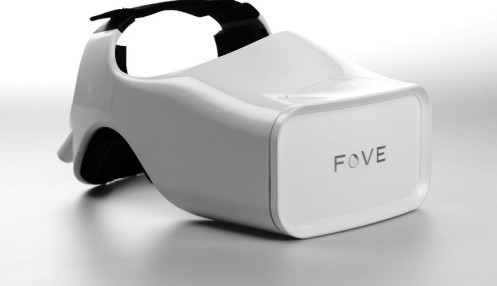VR Headset with Eye Tracking
May 25, 2015
on
on

A new type of headset designed by FOVE promises to add a new dimension to the immersive experience of virtual reality. Conventional VR headsets use head tracking to ensure that the movement of the 3D rendered images correspond to your head movements. The new VR headset from FOVE is also able to track eye movements.
Infra red emitters illuminate the eyes and cameras determine on which part of the VR images the gaze is directed. This information allows the image resolution to be degraded outside the area of gaze, thereby optimizing video processor loading and allowing less powerful systems to achieve more acceptable gaming performance. Gaze tracking allows you to aim at targets by just using your eyes and can also be used to interact with the game narrative. With a reduced need for head movements the FOVE system is also said to lessen the chances of inducing simulation sickness.
The technology also has applications for users with restricted fine motor skills where eye movements and blinks can be used to simulate mouse and keyboard inputs.
The system uses a 5.8 inch screen with WQHD resolution of 2560 x 1440, offering a 100º field of view and a frame rate of 60 fps. The head tracking employs low-latency 6/9 DOF IMU sensors while eye tracking uses two infra red sensors able to resolve eye positioning with an accuracy of less than 0.2 º operating at a frame rate of 120 fps per eye.
The system is currently up for funding on Kickstarter, for more information go to the company website.
Infra red emitters illuminate the eyes and cameras determine on which part of the VR images the gaze is directed. This information allows the image resolution to be degraded outside the area of gaze, thereby optimizing video processor loading and allowing less powerful systems to achieve more acceptable gaming performance. Gaze tracking allows you to aim at targets by just using your eyes and can also be used to interact with the game narrative. With a reduced need for head movements the FOVE system is also said to lessen the chances of inducing simulation sickness.
The technology also has applications for users with restricted fine motor skills where eye movements and blinks can be used to simulate mouse and keyboard inputs.
The system uses a 5.8 inch screen with WQHD resolution of 2560 x 1440, offering a 100º field of view and a frame rate of 60 fps. The head tracking employs low-latency 6/9 DOF IMU sensors while eye tracking uses two infra red sensors able to resolve eye positioning with an accuracy of less than 0.2 º operating at a frame rate of 120 fps per eye.
The system is currently up for funding on Kickstarter, for more information go to the company website.
Read full article
Hide full article

